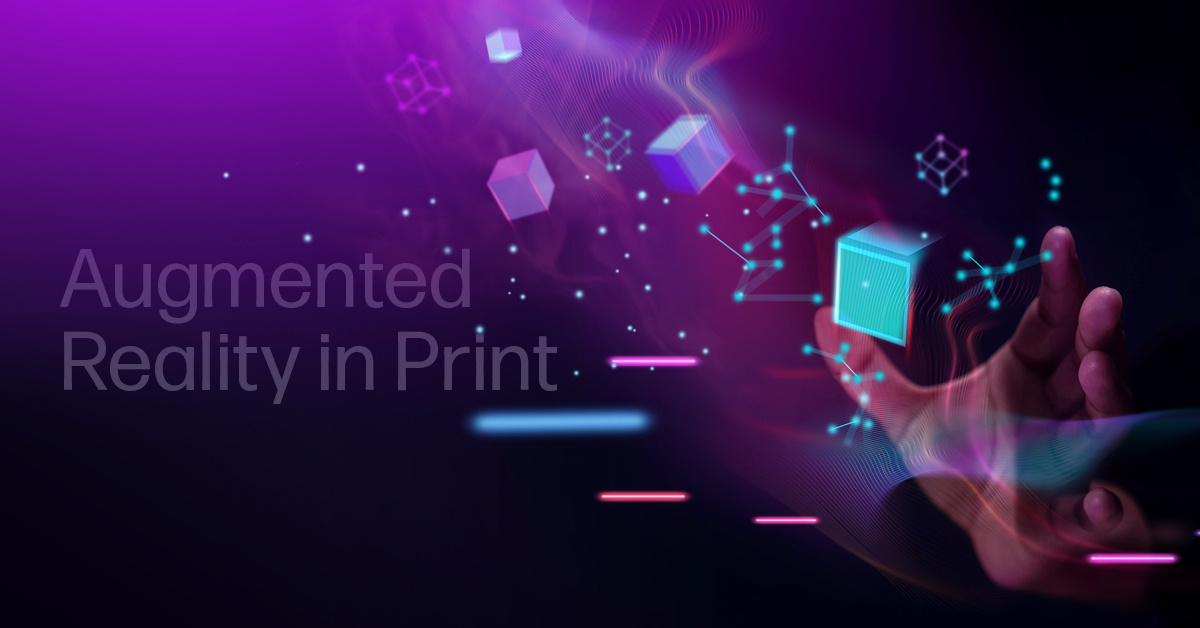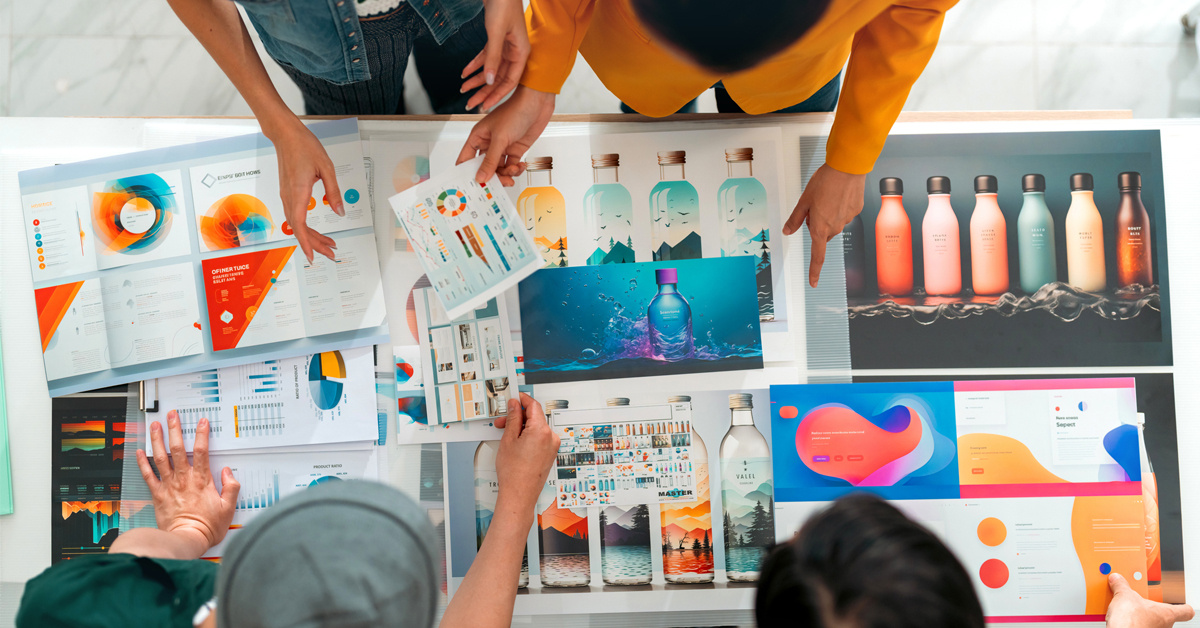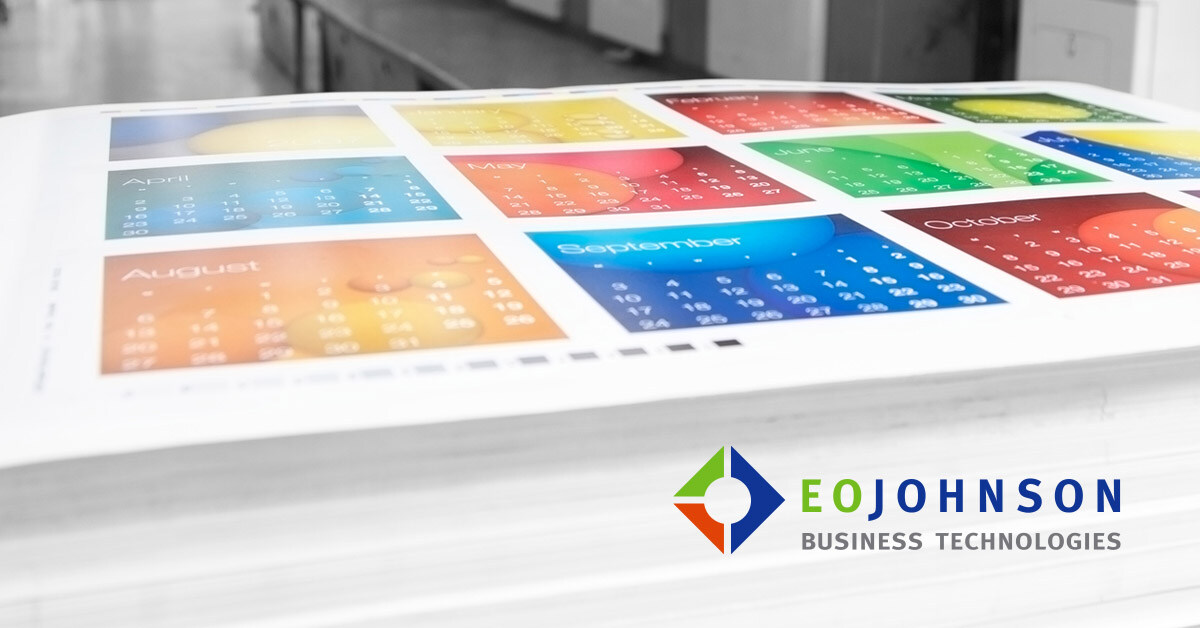Consumers are immersed in content on their screens today, so print media is evolving to create immersive, interactive experiences. One of the most promising technologies to bridge the gap between the physical and digital worlds is augmented reality (AR). Augmented reality brings print media to life by overlaying digital content onto printed materials, enhancing how people engage with magazines, brochures, posters, and even product packaging. This blog explores how augmented reality is revolutionizing print media, what it entails, and how it's already being used to unlock new levels of creativity and engagement.
What is augmented reality in print media?
Augmented reality is a technology that superimposes digital elements—such as images, videos, and 3D animations—onto a real-world environment. AR enhances the print world by adding layers of interactive content and turning static printed materials into dynamic, multimedia-rich experiences, viewable through smartphones or AR-enabled devices.
Using a mobile device’s camera or a specialized app, users scan a QR code or image from a printed item. The app then recognizes the specific marker and overlays interactive content, like animations or videos, on the screen, making the print come alive. This creates a seamless bridge between traditional print and the vast possibilities of digital media.
Six ways augmented reality is transforming print media
Augmented reality in print media is not just a fleeting trend but a powerful tool that can transform the way brands communicate, educate, and entertain their audiences. Here are some real-world applications showing how AR is being used to revolutionize print media:
1. Enhanced product catalogs
Product catalogs are a natural fit for augmented reality. Instead of relying solely on text and images to showcase products, businesses can use AR to provide a richer shopping experience. For example, IKEA’s print catalogs feature AR capabilities that allow customers to visualize how furniture will look in their homes. By scanning a page, users can place 3D models of sofas, tables, or chairs in their living space via their smartphones, giving them a real sense of scale and aesthetics before making a purchase.
This use of AR creates a highly personalized and engaging experience, making print catalogs more interactive and relevant in today’s digital-first shopping environment.
2. Interactive magazine ads
Magazine ads often compete for attention in a crowded visual landscape. By incorporating AR, brands can deliver ads that stand out. For instance, fashion magazines might feature AR-enabled ads that allow readers to see a model walking the runway, watch behind-the-scenes videos, or even virtually try on clothing by scanning the page. This interactive element makes the ad experience more memorable and engaging, allowing consumers to spend more time with the brand’s message.
Lexus famously used AR in a campaign where readers could scan a magazine ad to view a 3D model of a car, rotate it to see all angles, and explore interior features—all without leaving the printed page. This form of interactive advertising has helped brands create deeper connections with consumers by offering an engaging experience.
3. Interactive business cards
Business cards are a staple for networking, but they can easily be tossed away and forgotten. AR-enabled business cards, however, allow recipients to scan the card and access additional content, such as videos introducing the cardholder, links to their portfolio or website, or even direct integration with social media profiles. This adds a personal touch and leaves a lasting impression, showcasing the individual or company in a modern, tech-savvy light.
By turning a simple business card into a portal for multimedia content, AR opens new doors for creativity in professional branding.
4. Augmented book covers and pages
For book publishers, AR offers a way to extend storytelling beyond the printed page. By embedding AR into book covers or select pages, readers can unlock additional content, such as author interviews, animated summaries, or even alternate endings. This creates a multi-sensory reading experience that is both engaging and informative.
One example of AR in books is the children's series “Astro Cat,” where AR brings the characters to life and adds interactive educational features. Readers can scan illustrations and see animations or detailed 3D renderings of scientific concepts. This use of AR is particularly effective for educational publishers, as it helps to visualize complex information and keeps readers engaged.
5. Immersive packaging experiences
In retail, product packaging is another area where AR is making a significant impact. Brands can use AR to create interactive packaging that offers customers more information about the product or adds an element of entertainment. Wine and spirits companies have used AR on bottles, allowing customers to scan a label and watch a video about the vineyard or the history of the brand.
The “19 Crimes” wine label is a standout example. When scanned, the AR feature brings the historical figures featured on the label to life, telling the story of the criminals who inspired the brand name. This kind of immersive experience enhances customer engagement and offers a unique way to tell brand stories.
6. Interactive educational materials
Textbooks and educational materials are being transformed by AR to make learning more engaging. Students can scan diagrams or images in their textbooks to see 3D models or watch videos explaining complex subjects. This is particularly useful in fields like science, engineering, and medicine, where visualizing structures or processes in 3D can enhance understanding.
For instance, some anatomy textbooks now use AR to show detailed, interactive 3D models of the human body. Students can zoom in, rotate, and explore the various systems in ways that traditional illustrations or diagrams cannot achieve.
The benefits of augmented reality in print media
Augmented reality in print media offers a variety of benefits, including:
- Enhanced engagement: AR turns passive reading into an active experience, encouraging consumers to interact with printed materials.
- Deeper brand connection: By creating immersive experiences, brands can leave a lasting impression on their audiences.
- Personalized experiences: AR enables customized content, such as personalized product recommendations, which can drive conversions.
- Memorability: Interactive content is more likely to be remembered compared to static text or images.
- Versatility: AR can be applied to various forms of print media, from magazines and catalogs to packaging and business cards.
What’s next with augmented reality in print?
As augmented reality keeps advancing, it brings great opportunities for the production print industry. Combining the hands-on feel of print with the interactive elements of digital media, AR boosts engagement and connects the physical and digital worlds. Whether for advertising, education, or entertainment, AR is a powerful tool to spark creativity and engage audiences in new and meaningful ways. Brands and publishers that adopt this technology can expect to grab attention, increase engagement, and remain relevant in our digital world.
Our production print experts stay on top of the latest industry trends to support our commercial printing partners and help their customers elevate their brands. Let’s talk about how we can take your brand to the next level.











No Comments Yet
Let us know what you think